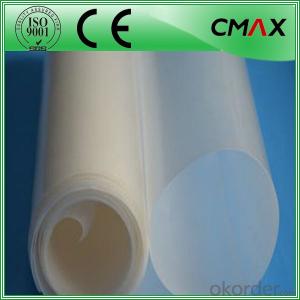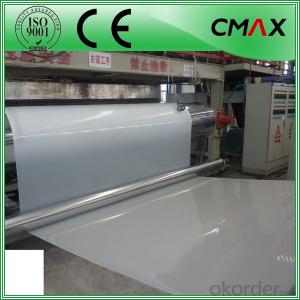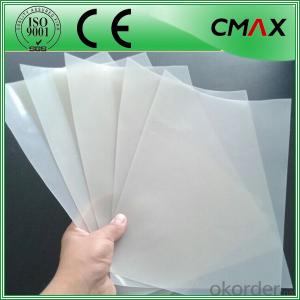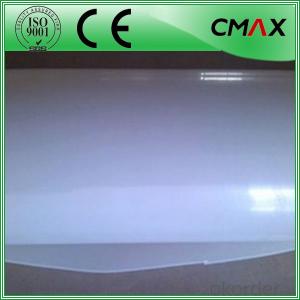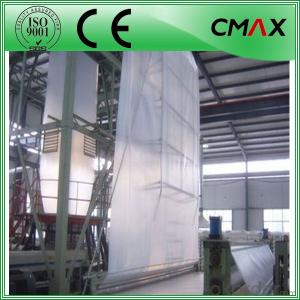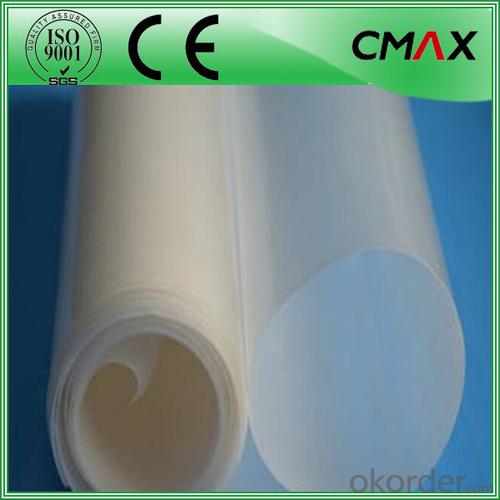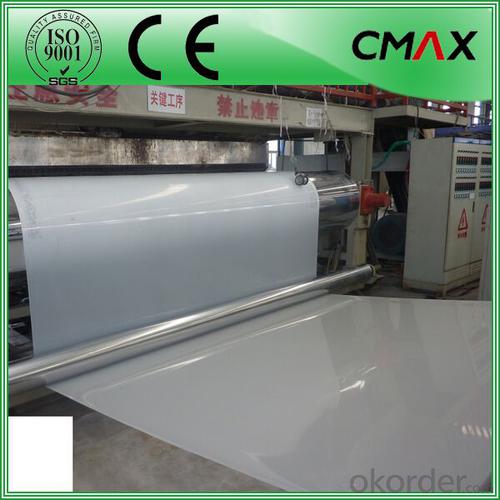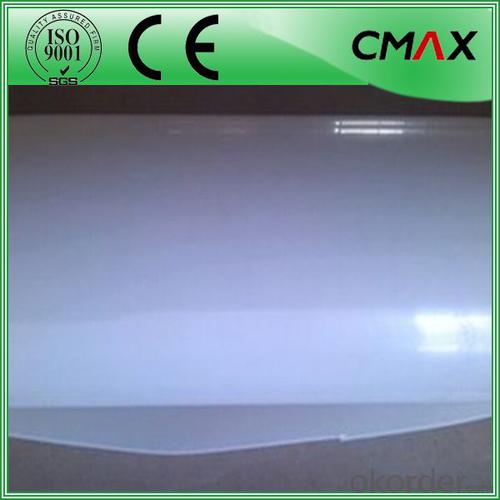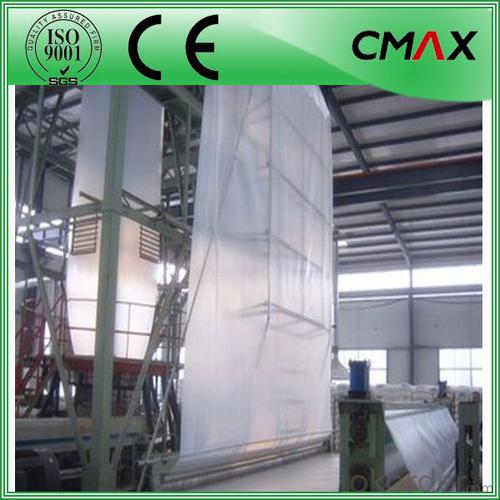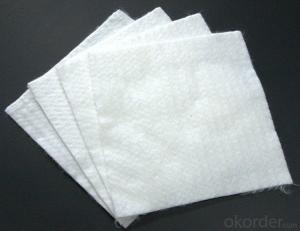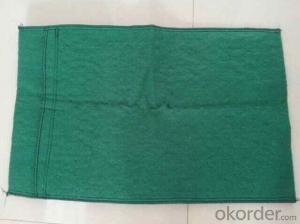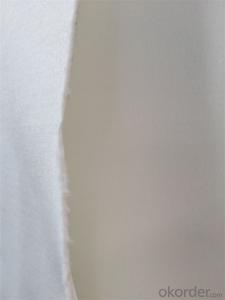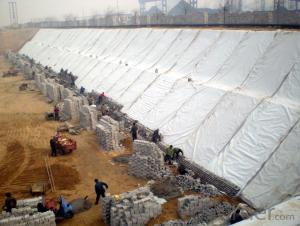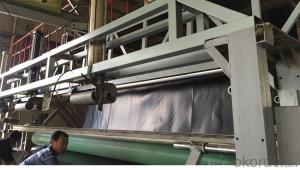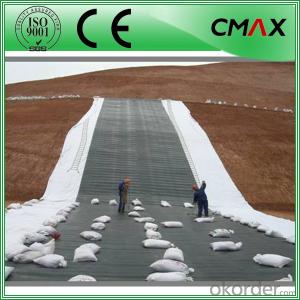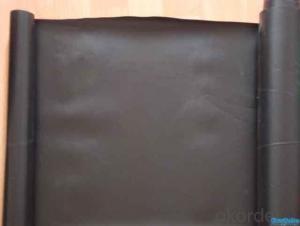Geotextile Amazon Plastic LLDPE Geomembrane and HDPE Pond Liner
- Loading Port:
- Tianjin
- Payment Terms:
- TT OR LC
- Min Order Qty:
- 100 roll
- Supply Capability:
- 20000 roll/month
OKorder Service Pledge
OKorder Financial Service
You Might Also Like
Plastic LLDPE Geomembrane and HDPE Pond Liner
Geomembrane Features:
Good mechanical properties, high tear strength, deformation and adaptable, puncture resistance, anti-aging, anti-ultraviolet-resistant, Anti oil and salt, pH, anti-corrosion, high temperature-resistant, non-toxic, long service life. water, drainage, seepage, the good effect of moisture, width, thickness of the full range of specifications and low cost, simple construction.
Specifications and Technical datas:
| Thickness | 0.15mm - 4.0mm |
| width | Within 8 m |
| length | 50-100m/roll (at request) |
| Material | HDPE,( LDPE, LLDPE, PVC, EVA ) |
| Color | Black , white , grey |
| Optional surface | Textued(one or two side) or smooth surface |
| Manufacturer | The biggest geomembrane liner manufacturer/factory in China for many years |
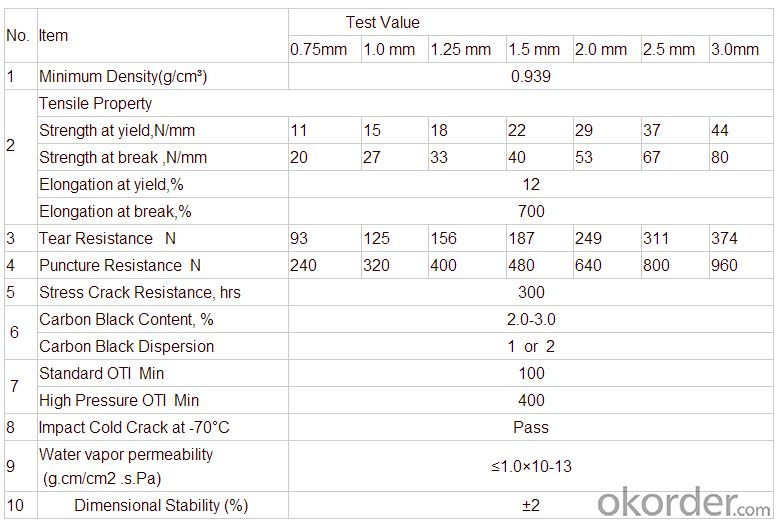
Details of our products:
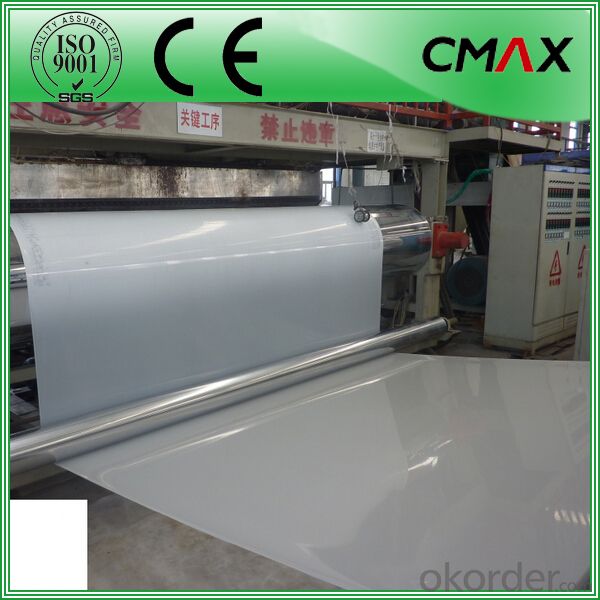
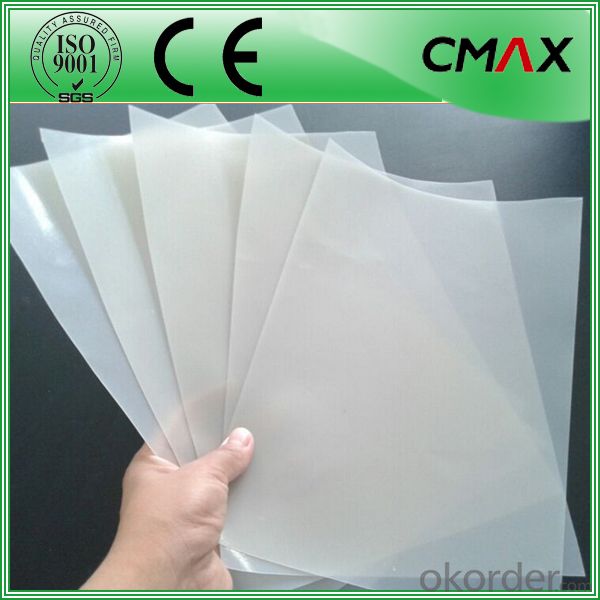

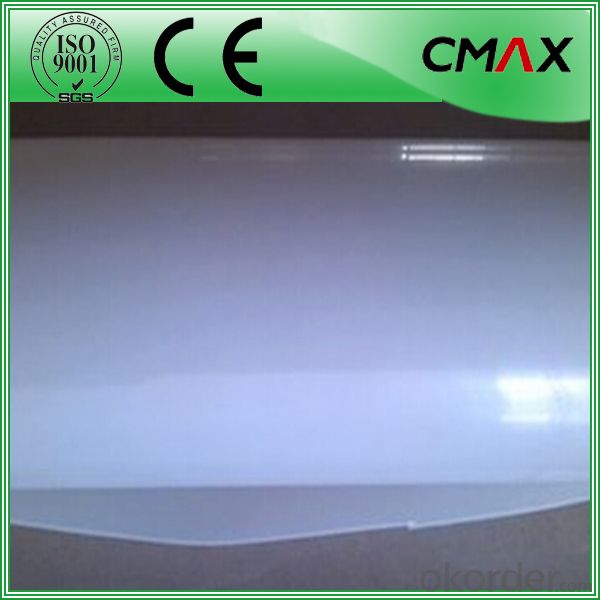
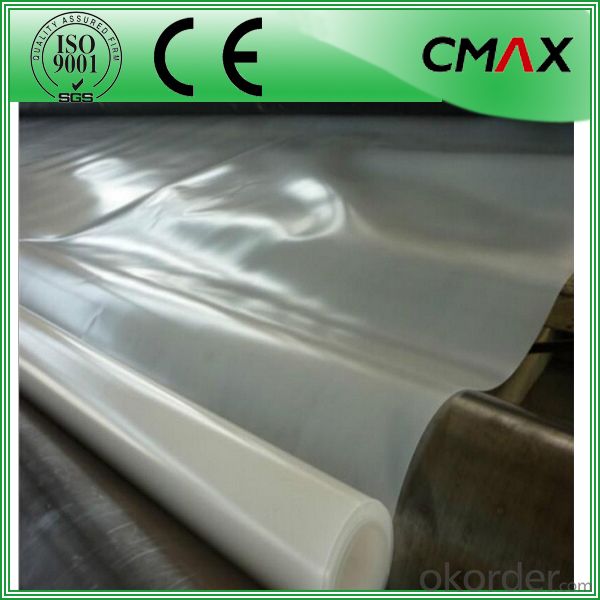
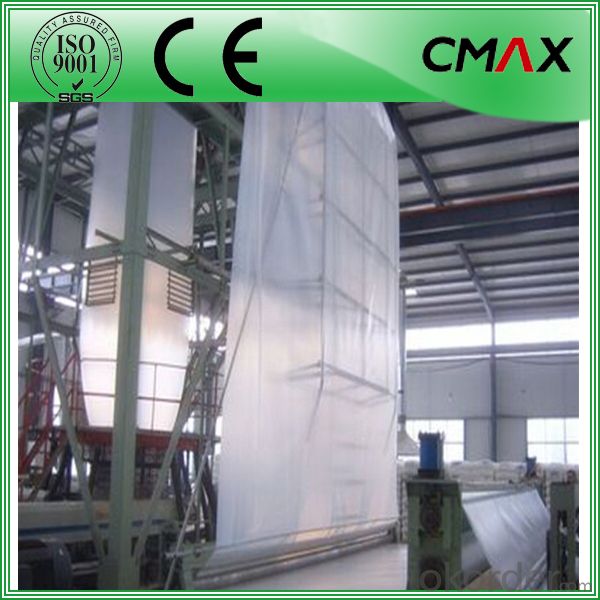
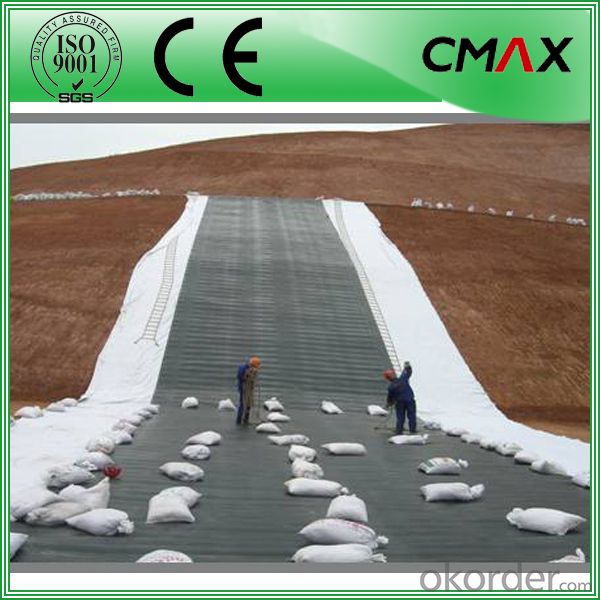
Applications:
1) Environmental protection, sanitation (such as solid waste landfills, sewage treatment plants, power plants Chi-conditioning, industrial, hospital solid waste, etc.) .
2) Water (such as rivers, lakes and reservoirs of the anti-dam, plugging, reinforcement of the canal seepage, the vertical wall of the heart, slope protection, etc.).
3) Municipal Engineering (subway, on the ground floor of the building, planted roof, the roof garden of anti-seepage, sewage pipes lining, etc.).
4) Landscape (man-made lake, river, reservoir, golf courses reservoirs of the substrate, slope protection, green lawn of the waterproof moisture, etc.).
5) Petrochemical (chemical plants, oil refineries, gas storage tanks of the anti-chemical reaction tanks, sedimentation tanks of the lining, etc.).
6) Mining (washing and pool heap leaching, the ash-field, dissolved, precipitation, the yard, the tailings seepage substrates, etc.) .
Packing and shipping:
1. The outer package: black or white woven geotextile.or we can make the package as your requst.
2. Different tgram/ roll size for different qty in the same containers.
3. Roll size: 3.95m*200 for container
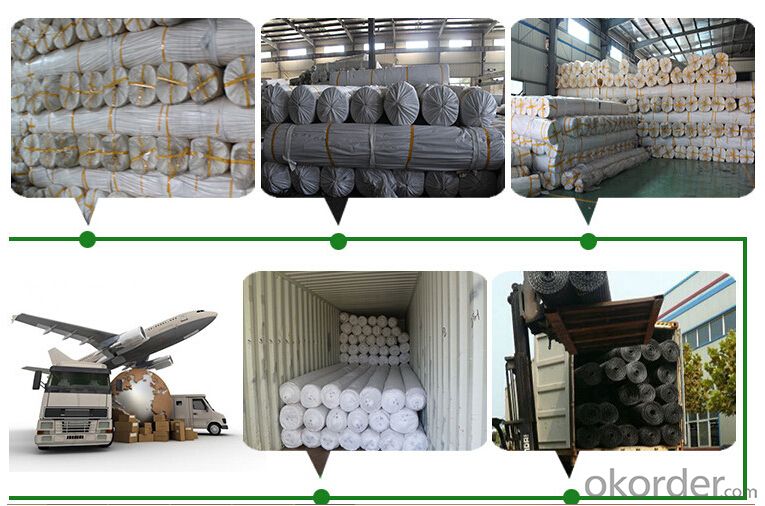
FAQ:
Q1: What is your minimum order quantity?
A:The minimum order quantity is 5000 ,but it is negotiable.
Q2:What is your payment terms?
A: T/T,Western Union,Paypal,L/C...
HDPE Geomembrane Price
Q3:What is your delivery time?
A:Production time usually costs 2-20 days.
Waiting to cooperate with you!
- Q: What is geomembrane geomembrane, composite geomembrane
- Anti-seepage drainage of the site ah Geomembrane ah
- Q: Seepage geotextile and impervious geomembrane
- It is generally believed that the individual geotextile does not have the anti-seepage effect, the main assessment index is the permeability coefficient, the general geotextile coefficient is higher than the ordinary soil, about 0.01-0.001 look, but the geotextile and rubber, Asphalt, plastic combination will form a water-impermeable composite, anti-seepage effect increased by 10 times, and asphalt, rubber combined into a waterproofing membrane such as sbs, etc., and plastic is generally polyethylene, polyvinyl chloride, eva (standard name is Geomembrane) is a combination of impermeable geomembrane or composite geomembrane, because the composite white geotextile outside the protective effect, so the project is also called impermeable geotextile. Therefore, the two are essentially not much difference, but the argument is different. Waterproof board is also called geomembrane, customary to> 0.8mm thick geomembrane called waterproof board, & lt; 0.8mm called geomembrane, it is based on high molecular polymer as raw material made of impermeable material , Divided into homogeneous waterproof board and composite waterproof board
- Q: Can geotextiles be used for separation of different soil layers?
- Yes, geotextiles can be used for the separation of different soil layers. Geotextiles are commonly used in civil engineering and construction projects to create a barrier between different soil types or layers. They help prevent the mixing and migration of soil particles, improving the overall stability and performance of the soil structure.
- Q: How do geotextiles prevent soil erosion?
- Geotextiles prevent soil erosion by acting as a barrier that stabilizes the soil and prevents it from being washed away by water or wind. They provide support to the soil, allowing vegetation to grow and reinforcing the soil structure, thus reducing the potential for erosion.
- Q: What is the purpose of using geotextiles in construction projects?
- The purpose of using geotextiles in construction projects is to provide reinforcement, separation, filtration, and drainage capabilities to improve the overall performance and longevity of the structures.
- Q: What is the specific use of geotextile construction site? How much is it used?
- Hello, play the role of reinforcement, the use of the filter depends on the design requirements is calculated by square method Huazhi geotextile material manufacturers for you to answer
- Q: What is the latest price of geotextile?
- Ask the geotextile price is too general, because the standard too much. Short wire, filament, polyester; non-standard, GB and so on. Ton price is generally between 4900-7500 yuan / ton, but the weight <200g, an increase of 100 yuan / ton; weight> 800g, an increase of 500 yuan / ton.
- Q: How do geotextiles improve the performance of tunnels?
- Geotextiles improve the performance of tunnels by providing reinforcement, drainage, and filtration. They help stabilize the soil and prevent erosion, leading to increased structural stability and longevity of the tunnel. Additionally, geotextiles can facilitate efficient water drainage, reducing the risk of water accumulation and potential damage to the tunnel. Lastly, they act as a filter, preventing fine particles from clogging drainage systems and ensuring the smooth functioning of the tunnel infrastructure.
- Q: Can geotextiles be used in the protection of culverts?
- Yes, geotextiles can be used in the protection of culverts. Geotextiles are permeable fabrics that can be placed around culverts to prevent soil erosion and filter out sediments. They provide additional support and stability to the culvert, protecting it from damage and prolonging its lifespan.
- Q: How are geotextiles tested for strength and durability?
- Geotextiles are tested for strength and durability through various methods such as tensile strength tests, puncture resistance tests, tear strength tests, and abrasion resistance tests. These tests involve subjecting the geotextile to controlled forces and conditions to determine its ability to withstand different types of stresses and strains. Additionally, long-term exposure tests are conducted to assess the geotextile's durability under simulated environmental conditions, ensuring its performance over time.
Send your message to us
Geotextile Amazon Plastic LLDPE Geomembrane and HDPE Pond Liner
- Loading Port:
- Tianjin
- Payment Terms:
- TT OR LC
- Min Order Qty:
- 100 roll
- Supply Capability:
- 20000 roll/month
OKorder Service Pledge
OKorder Financial Service
Similar products
Hot products
Hot Searches
Related keywords
